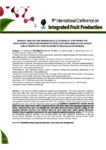Use este identificador para citar ou linkar para este item:
http://www.alice.cnptia.embrapa.br/alice/handle/doc/1054903Registro completo de metadados
| Campo DC | Valor | Idioma |
|---|---|---|
| dc.contributor.author | DAMOS, P. | pt_BR |
| dc.contributor.author | BONSIGNORE, C. P. | pt_BR |
| dc.contributor.author | NAVA, D. E. | pt_BR |
| dc.contributor.author | BERNARDI, D. | pt_BR |
| dc.contributor.author | BOTTON, M. | pt_BR |
| dc.contributor.author | BARROS-PARADA, W. | pt_BR |
| dc.contributor.author | FUENTES-CONTRERAS, E. | pt_BR |
| dc.contributor.author | ESCUDERO-COLOMAR, L. A. | pt_BR |
| dc.contributor.author | BOSCH, D. | pt_BR |
| dc.contributor.author | AVTZIS, D. N. | pt_BR |
| dc.date.accessioned | 2016-10-18T11:11:11Z | pt_BR |
| dc.date.available | 2016-10-18T11:11:11Z | pt_BR |
| dc.date.created | 2016-10-18 | pt_BR |
| dc.date.issued | 2016 | pt_BR |
| dc.identifier.citation | IN: INTERNATIONAL CONFERENCE ON INTEGRATED FRUIT PRODUCTION, 9., 2016, Thessaloniki. Anais... Thessaloniki, Greece, p. 128, 4-8 sept. 2016. | pt_BR |
| dc.identifier.uri | http://www.alice.cnptia.embrapa.br/alice/handle/doc/1054903 | pt_BR |
| dc.description | In this work we compare Grapholita molesta Busck (Lepidoptera: Tortricidae) populations originated from Brazil, Chile, Spain, Italy and Greece using power spectral density and phylogenetic analysis to detect any similarities between the population macro- and the molecular micro-level. Log-transformed population data were normalized and AR(p) models were developed to generate for each case population time series of equal lengths. The time-frequency/scale properties of the population data were further analyzed using wavelet analysis to detect any population dynamics frequency changes and cluster the populations. Based on the power spectral of each population time series and the hierarchical clustering schemes, populations originated from Southern America (Brazil and Chile) exhibit similar rhythmic properties and are both closer related with populations originated from Greece. Populations from Spain and especially Italy, have higher distance by terms of periodic changes on their population dynamics. Moreover, the members within the same cluster share similar spectral information, therefore they are supposed to participate in the same temporally regulated population process. On the contrary, the phylogenetic approach revealed a less structured pattern that bears indications of panmixia, as the two clusters contain individuals from both Europe and South America. This preliminary outcome will be further assessed by incorporating more individuals and likely employed a second molecular marker. | pt_BR |
| dc.language.iso | eng | eng |
| dc.rights | openAccess | eng |
| dc.subject | Insect seasonality | pt_BR |
| dc.subject | Phylogenetics | pt_BR |
| dc.title | Wavelet analysis and hierarchical clustering of ofm phenotypic population's variations originated from southern america and europe and attempts of a first relation to molecular divergence. | pt_BR |
| dc.type | Resumo em anais e proceedings | pt_BR |
| dc.date.updated | 2019-03-08T11:11:11Z | pt_BR |
| dc.subject.thesagro | Praga de planta | pt_BR |
| dc.subject.thesagro | Mariposa oriental | pt_BR |
| dc.subject.thesagro | Inseto | pt_BR |
| dc.subject.thesagro | Lepidoptero | pt_BR |
| dc.subject.thesagro | Filogenia | pt_BR |
| dc.subject.thesagro | Grapholita Molesta | pt_BR |
| dc.subject.nalthesaurus | Population dynamics | pt_BR |
| riaa.ainfo.id | 1054903 | pt_BR |
| riaa.ainfo.lastupdate | 2019-03-08 -03:00:00 | pt_BR |
| dc.contributor.institution | P. Damos, Aristolte University of Thessaloniki, School of Agriculture, Laboratory of Applied Zoology and Parasitology, Greece, damos@agro.auth.gr, petrosdamos@gmail.com; C. P. Bonsignore, Universita Mediterranea di Reggio Calabria, Dipartimento Patrimonio, Architettura, Urbanistica, Laboratorio di Entomologia ed Ecologia Applicata, Salita Melissari, Reggio Calabria, Italy, cbonsignore@unirc.it; DORI EDSON NAVA, CPACT; D. Bernardi, Embrapa Uva e Vinho Empresa Brasileira de Pesquisa Agropecuária (Embrapa), Pesquisador Entomologia, Bento Gonçalves, RS, marcos.botton@embrapa.br; MARCOS BOTTON, CNPUV; W. Barros-Parada, 5 Universidad de Talca, Millennium Nucleus Center in Molecular Ecology and Evolutionary Applications in the Agroecosystems (CEM), Chile, efuentes@utalca.cl; E. Fuentes-Contreras, 5 Universidad de Talca, Millennium Nucleus Center in Molecular Ecology and Evolutionary Applications in the Agroecosystems (CEM), Chile, efuentes@utalca.cl; L. A. Escudero-Colomar, 6 Institute for Food and Agricultural Research and Technology (IRTA), Sustainable Plant Protection (Entomology), Mas Badia,17134 La Tallada d’Empordà, Girona, Spain, adriana.escudero@irta.cat; D. Bosch, Institute for Food and Agricultural Research and Technology (IRTA), Sustainable Plant Protection (Entomology), Av Rovira Roure, 191. 25198 Lleida, Spain, dolors.bosch@irta.cat; D. N. Avtzis, Forest Research Institute (F.R.I.) National Agricultural Research Foundation (N.AG.RE.F.), 57006 Vassilika, Thessaloniki, Greece, dimitrios.avtzis@fri.gr. | pt_BR |
| Aparece nas coleções: | Resumo em anais de congresso (CNPUV)  | |
Arquivos associados a este item:
| Arquivo | Descrição | Tamanho | Formato | |
|---|---|---|---|---|
| BottonAbstractbook9thIFP.pdf | 896,46 kB | Adobe PDF |  Visualizar/Abrir |









